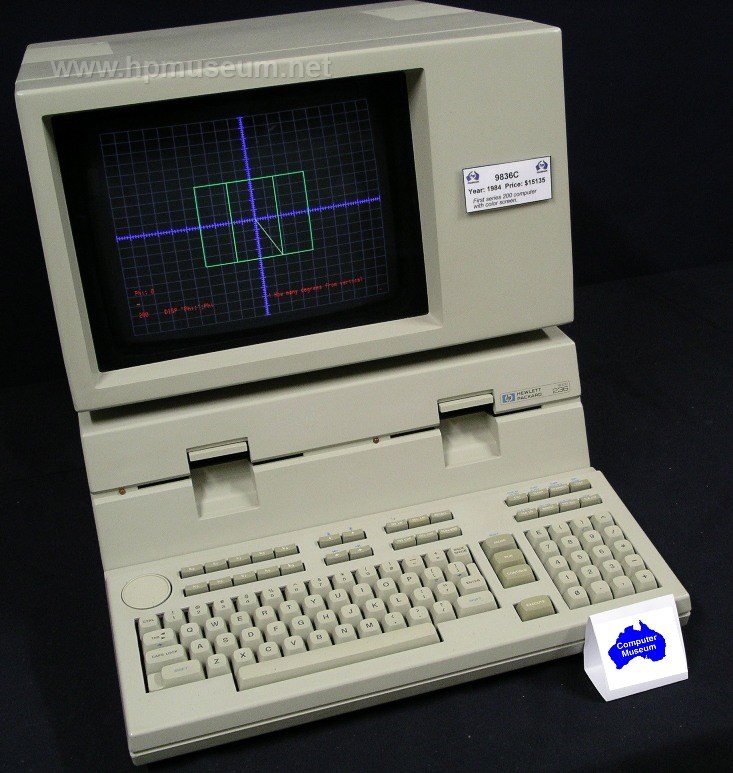Technical Desktops
 | 200 Series Selection: |
| 1) 9826A (1981) | |
| 2) 9836 (1981) | |
| 3) 9816 (1982) | |
| 4) 9920 (1983) | |
| 5) 9817 (1984) | |
| 6) 9837H (1984) | |
HP introduced its 200 Series with the 9826 in 1981. The 200 Series machines were HP's high-end technical desktops and were based on the new Motorola 68000 processor (clock speeds of 8 MHz or 12.5 MHz). HP had six models in this range including the rack-mountable 9920 and 9837. All 200 Series machines came with HP-IB interfaces and none offered the option of a built-in printer. The early 200 Series machines featured BASIC, Pascal and HPL (providing some compatibility with the 9825 ). The high-performance models also offered HP-UX, FORTRAN and assembly language. The 200 Series went through three naming/numbering cycles. The first machine was born as the 9826, became the "200 Series Model 26" and retired as the "HP 9000 Model 226" . Before the 200 Series, all previous HP desktop computers (80 Series, 98X5 Series, 98X0 Series) used pluggable hardware ROMs to expand the language/processing capabilities of the computer. The 200 Series used RAM-based operating systems and languages (with the exception of the optional ROM-based HPL and BASIC ROM boards). All subsequent HP desktop computers also used RAM-based operating systems and languages. These products were developed and manufactured at HP's Desktop Computer Division.
Ansgar Kuekes has created an amazing utility for allowing a modern PC to emulate disc drives for the 200 Series computers. To run "hpdrive", you only need a GPIB card for your PC and an HP-IB cable: HPDrive. Using Ansgar's "HPDir" utility, you can use your PC to perform disc operations on the old software (copy discs, transfer files, etc): HPDir. Be sure to visit Olivier De Smet's emulator project for 200 Series computers. The museum has a collection of software available for download for these computers. Click here for the software listing. | |
| Back | Product Documentation | Category Accessories |
^ TOP©2004 - 2024 BGImages Australia - All Rights Reserved.
The HP Computer Museum and BGImages Australia are not affiliated with HP Inc. or with Hewlett Packard Enterprise. Hewlett Packard and the HP logo are trademarks of HP Inc and Hewlett Packard Enterprise. This website is intended solely for research and education purposes.
